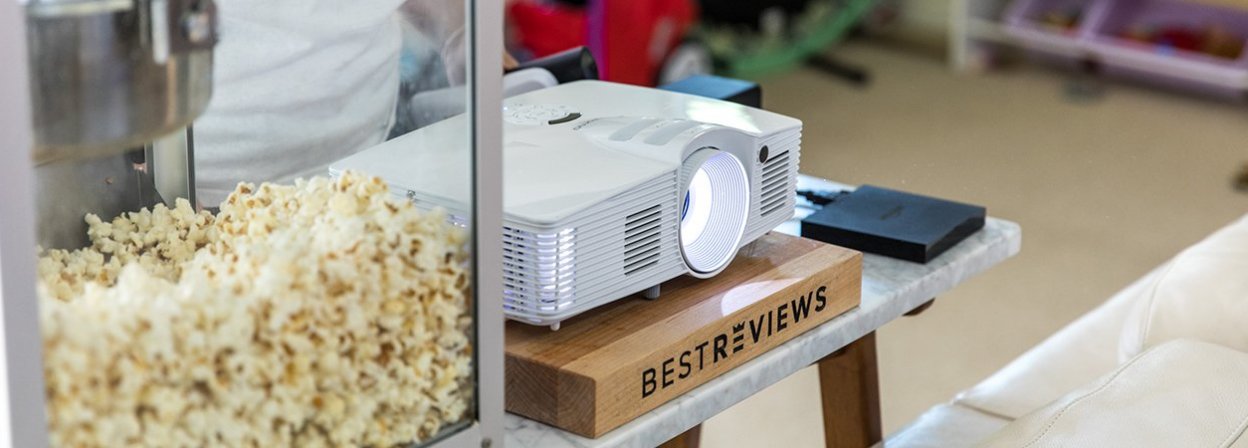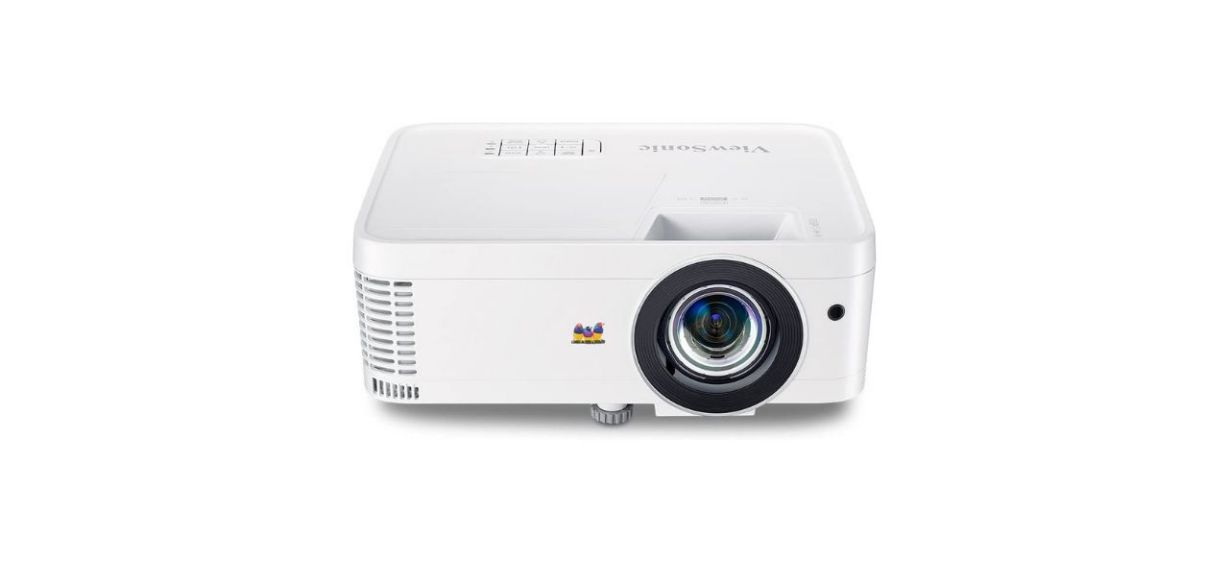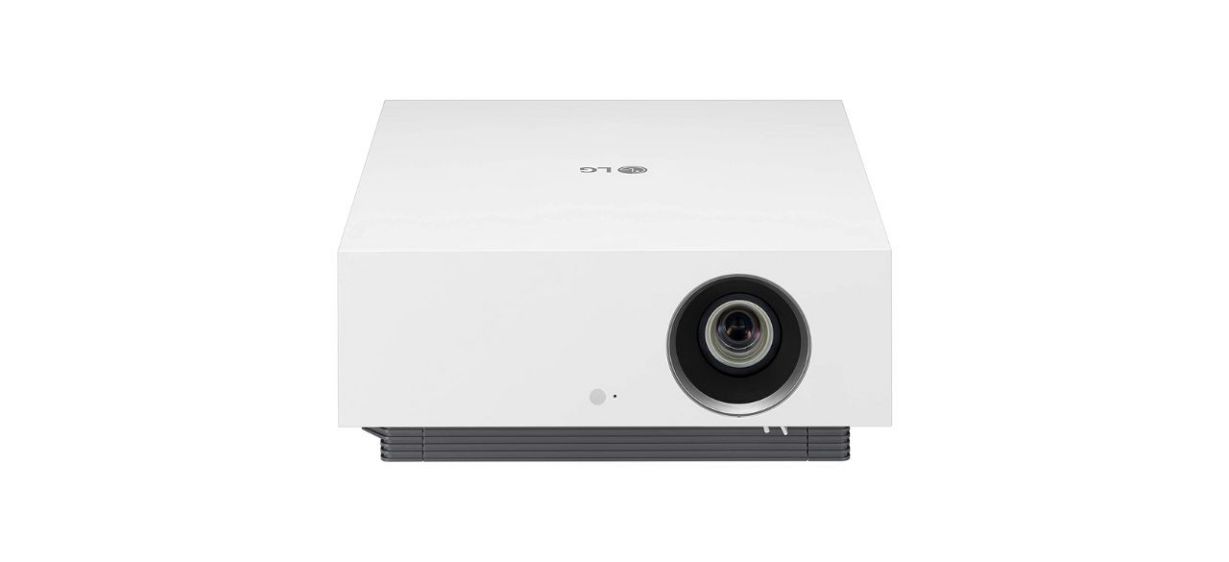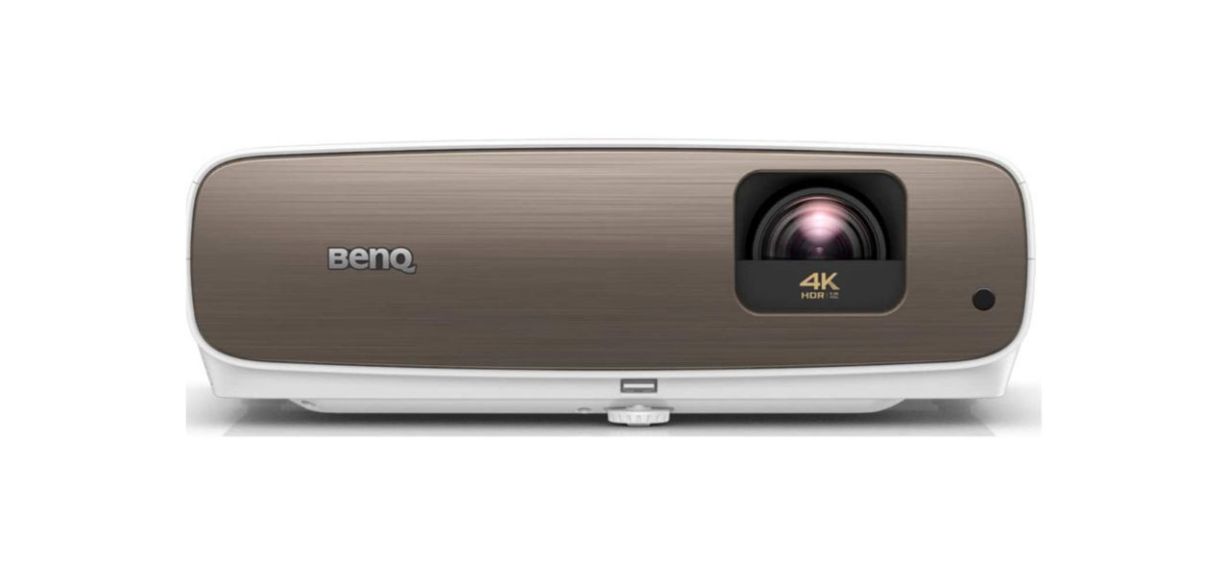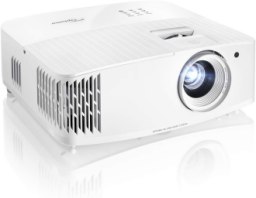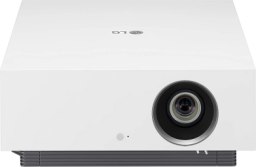Buying guide for Best home theater projectors
If a big TV just isn’t enough, it may be time to invest in a home theater projector.
Home theater projectors create pictures equal to or larger than the biggest TVs — and they do it the movie theater way, by shining light onto a wall or projector screen. Nowadays, many home theater projectors can play almost anything a smart TV can, including streaming video.
Compared to a 100-inch TV, a home theater projector is smaller, lighter and, in many cases, more practical. One word you see a lot of when shopping for projectors is “throw.” This figure tells you how far the projector needs to be from the wall or screen to project a clear picture. Standard-throw projectors need to be across the room, while short-throw projectors sit near the viewer. Ultra short-throw projectors sit very close to a screen or wall and shine their picture upward.
Another key spec to look at is brightness, measured in ANSI lumens. The greater the brightness, the better the picture. A good range for home theater projectors is between 1,000 and 2,500 ANSI lumens, especially if you dim the lights and close the blinds.
Other specs to examine include resolution, such as 1080p HD or, for an even sharper picture, 4K; contrast ratio, or how bright or dark the projector’s image gets; and lamp life, or how long the illumination (bulb, LED, laser) lasts. Don’t forget to check a projector’s speakers and audio and whether its fan makes too much noise.
We researched the available models and performed our own testing, and we think Samsung’s The Premiere LSP7T 120-inch 4K Smart Laser Projector offers the best combination of features and performance in a home theater projector. Another great choice, the ViewSonic PX706HD Short Throw Projector is not 4K but packs a lot of value into its sub-$1,000 cost.
Home theater projectors
We think Samsung’s LSP7T Premiere Projector is the best choice to outfit a home theater. Why? We love its ultra-short throw distance, smart features and elegant and unobtrusive looks.
From the reflector above its speaker, the Premiere throws a picture 120 inches tall from just 1.4 feet away. Its laser-based 4K image shines crisply with accurate color at 2,200 ANSI lumens — enough for a standard-lit room. It’s got streaming video apps built-in, including Netflix, Hulu, Disney+, Paramount+ and Apple TV+, and you can use NFC pairing to cast from your phone with a finger tap.
Built-in 2.2-channel speakers provide good-quality sound for its size, and it has specific frame rate and refresh settings for gaming and cinematic movies. It looks sleek, too, with rounded edges and a fabric exterior that blend well with your decor. And while it’s expensive, it’s not unreasonably so. The simplicity and power make it our top pick.
At around a quarter of the cost of our top pick, the ViewSonic PX706HD is an excellent bargain for a home theater projector. Its short-throw lens needs just 3 to 9 feet of space to project an image up to 100 inches. It offers manual zoom to change the size and focus of the image, if needed. Its 240-watt halide lamp lets it shine at a bright 3,000 ANSI lumens, although like most lamp-based projectors, you’ll eventually need to change the bulb after some 4,000 hours of use (15,000 hours in eco mode.)
It doesn’t have any smart features or wireless connections, but it has ports for HDMI, VGA, composite and DB-9 cables. It also has two USB-C ports for input and power. Although it only has a 1080p HD resolution, it’s got low latency for gaming and built-in speakers. It even has 3D compatibility, so break out the goggles.
Epson’s Home Cinema 4010 4K Projector boasts high color accuracy and a vivid contrast ratio thanks to its three-chip display technology and HDR compatibility, avoiding unwanted issues, such as rainbowing, for a sharp, immersive picture.
Like many 4K-rated projectors, it actually uses a technology called pixel shifting to create a 4K image out of a 1080p native resolution. And it packs 2,400 ANSI lumens of brightness with a 250-watt bulb rated for 3,500 to 5,000 hours of use before replacement.
A standard-throw projector, this Epson model needs anywhere from 11 to 24 feet to throw a 120-inch image. It’s 3D capable and offers connectors for HDMI, Ethernet (for a cable link to your computer, not directly to the internet), VGA, DB-9 and USB along with one for a 12-volt trigger. Potential buyers should note that the Epson 4010 does not have internal speakers.
If simplicity is your priority, it’s tough to beat the Samsung Freestyle Smart Portable Projector, which is easy to transport and boasts a point-and-play setup: you set it down, aim it and let it adjust the picture for you. A short-throw projector, the Freestyle needs a distance of between 2.6 and 8.8 feet for images 30 to 100 inches in size. Its LED lamp is rated for 20,000 hours, and we found the 1080p image both clear and bright, although Samsung doesn’t specify its brightness in ANSI lumens.
The Freestyle uses Wi-Fi for streaming apps. It can display images you upload yourself, and it even acts as a light source. In our testing, despite its size, we found the 360-degree speaker particularly impressive based on its solid sound.
We tested this projector both indoors and on a patio. The picture was good, but we found the USB-C power cable too short for outdoors. We also had a little trouble with its auto leveling. Still, for simplicity and convenience, the Freestyle is hard to ignore.
A high-end model, the LG CineBeam HU810PW is a 4K pixel-shifting projector with a dual-laser lamp that shines at 2,700 ANSI lumens and can adjust its iris to suit light and dark rooms. It supports HDR10 and HLG standards for a deep contrast ratio of 2,000,000:1 and can auto-adjust contrast depending on the image.
As a smart projector, the CineBeam connects to the internet to stream the top apps, although it doesn’t do Netflix. It’s a standard-throw projector with a throw distance of 6 to 28 feet for images 40 to 300 inches in size.
The CineBeam boasts HDMI 2.0 and 2.1 ports to connect to external speakers, game consoles and more. It has an optical audio out and an Ethernet port, and it supports Alexa and Apple AirPlay.
As its name implies, the Optoma UHD35 Gaming Projector has specs tailored for great gaming performance. Like gaming TVs, this model boasts several combinations of a high refresh rate (how fast the image updates) and a low input lag (how slowly it responds to input) with a 240 Hz refresh rate and a 4.2 ms input lag at 1080p. These are the kind of specs you need for sessions of Elden Ring or Modern Warfare.
It’s a standard-throw projector that displays a 120-inch image from 13 feet at 3,600 ANSI lumen, which is bright enough for a well-lit room. It’s lit by a 240-watt halide bulb with a lifespan of 4,000 to 15,000 hours. There’s no built-in streaming. However, it has HDMI 2.0 and HDCP connections to game consoles, streaming devices and other content sources. It has DB-9, VGA and USB ports along with built-in speakers and optical and analog audio connections.
The rounded Anker Nebula Cosmos projector, like the Samsung Freestyle, is a portable projector with plenty of style in a convenient package. Its 900-ANSI lumen LED-lit picture may not be as bright as others on our list, but it’s plenty for dark environments, including a movie party on an outdoor screen.
The Nebula runs Android TV 9.0 as its OS, letting it run not only streaming apps but also video player apps to watch media from USB flash drives or hard drives. It’s capable of throwing a picture up to 120 inches in size from a distance of 10.6 feet. It’s got a solid built-in speaker plus audio out as well as two HDMI ports and wireless internet.
Auto-focus and both horizontal and vertical keystone allow the Cosmos to adjust its image to your needs using the included remote. Add one of Anker’s stands for a complete Nebula setup.
From BenQ, a stalwart in the home projector industry, the CinePrime HT3550 short-throw projector offers a true 4K image and 2,000 ANSI lumens of brightness from a 245-watt halide bulb, replaceable after 4,000 to 15,000 hours of use.
The CinePrime emphasizes sharp image quality with a dynamic iris for excellent contrast ratio and HDR10 support for high dynamic range. Manual zoom, manual focus and vertical lens shifting allow you to adjust the picture to your liking. Its short throw makes a 100-inch image possible at 8.2 feet.
The CinePrime doesn’t have built-in streaming, but it has two HDMI ports and three USB ports plus audio out, and it’s 3D compatible.
Another home theater projector with good gaming specs, the ViewSonic PX701-4K is a pixel-shifting 4K projector with the ability to switch to a fast 240 Hz refresh rate and low 4.2 ms input lag when needed. A standard throw model with typical throw distances from 7 to 21 feet, it offers 3,200 ANSI lumens of brightness from a 206-watt lamp replaceable after 6,000 to 20,000 hours (eco mode) of use.
For adjusting and fine-tuning the picture, it comes with both manual and digital zoom, horizontal and vertical digital keystone (to correct any distortion that may occur if the projector lens isn’t centered with your screen) and manual focus. HDR support gives it a good contrast ratio, while its 10-watt mono speaker provides acceptable audio.
You can also hook up speakers via its audio line out. It comes with two HDMI 2.0 ports for gaming consoles and other video sources plus a DB-9 port and USB.
How we tested
We obtained the Samsung Freestyle portable projector and tested it for brightness, picture quality, audio quality and ease of use both indoors and on a covered outdoor patio.
Setup
- Unboxing and design: We removed the projector from its packing materials and rated its design, weight and portability.
- Startup: We powered it on to see how well its automated picture setup performed.
- Apps: With its streaming apps, we tested how easy it was to sign up and log on to each app and how long it took to do so.
Features and performance
- Brightness: Once set up, we evaluated the brightness of the image and compared it to a smart TV’s picture.
- Image quality: We noted how well the projector maintained the image during operation, including angle, focus, alignment and keystone.
- Streaming: We tested the speed and quality of the streaming apps included with the projector.
- Audio: We evaluated the quality of the built-in speakers with various shows and music.
- Noise: We wanted to make sure the fan noise, if any, wasn’t loud enough to be distracting.
- Controls: We checked the projector’s remote control for usefulness, features and user convenience.
FAQ
Q. Why buy a projector instead of a TV?
A. A projector can provide much more screen area than a TV, and it usually does so more affordably. Projectors take up less space than large-screen TVs, especially if you can mount them. Even a heavy projector is more compact and portable than a big-screen TV.
It’s also possible that the reflected light from a projector is less straining on the eyes than the emitted light from a TV screen.
Q. Are 4K projectors as good as 4K TVs?
A. 4K TVs, especially OLED TVs, have better contrast and sharpness than most 4K projectors, though projectors have gotten closer. And any 4K TV is brighter than all but the brightest 4K projectors. But current 4K projectors produce a picture that’s more than good enough for even the most demanding viewing, and they do so at bigger image sizes than TVs.
Q. How much should I pay for a good projector?
A. A price tag of $1,000 and below is considered low-cost for projectors. Small, portable units cost $500 or less. Between $1,000 and $3,000 are full-featured models with 4K and streaming. Above $3,000 you’ll find models with top display technologies that resemble or rival the digital projectors used in movie theaters.

